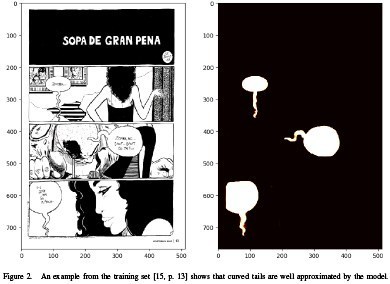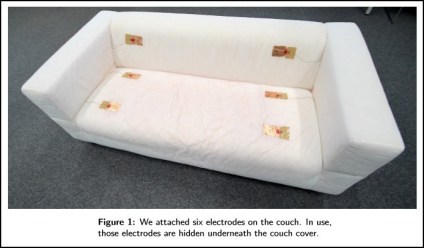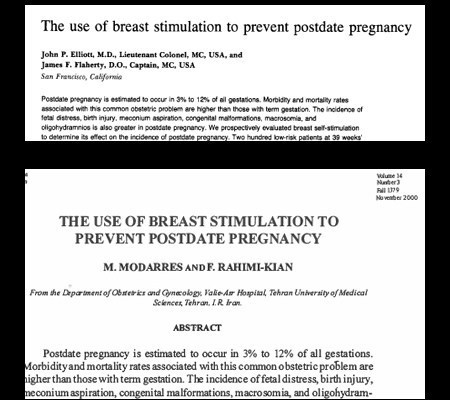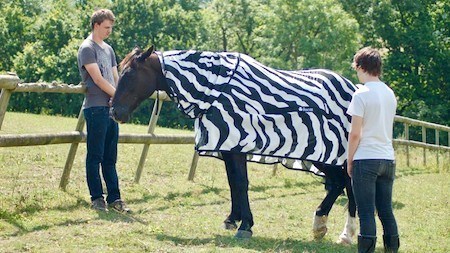Marc Abrahams's Blog, page 156
February 26, 2019
Automatic Speech Balloon Detection and Segmentation for Comic Books
You might find that reading comic books is complex and confusing, if you are a machine. If both of those ifs afflict you, you might seek relief by reading this new study:
“Deep CNN-based Speech Balloon Detection and Segmentation for Comic Books,” David Dubray, Jochen Laubrock, arXiv:1902.08137v1, 2019. (Thanks to Mason Porter for bringing this to our attention.) The authors, at the University of Potsdam, Germany, explain:
“We develop a method for the automated detection and segmentation of speech balloons in comic books, including their carrier and tails. Our method is based on a deep convolutional neural network that was trained on annotated pages of the Graphic Narrative Corpus…. Qualitative results suggest that wiggly tails, curved corners, and even illusory contours do not pose a major problem. Furthermore, the model has learned to distinguish speech balloons from captions.”
Here’s further detail from the study:

February 25, 2019
An E-Couch – new directions in smart home control
“Controlling devices in a smart home often requires users to start and use an app on their phone. This can be cumbersome (especially with increasing sizes of device ensembles) and puts demands on a user’s attention or engagement they might not be willing or able to fulfill.”
– prompting a research team from the University of Hannover, Germany, to develop and test a smart-couch concept – called the “CapCouch”. The idea is to relieve consumers from having to interact with an app, by electronically sensing how they’re sitting on their sofa.
“We used our couch and device ensemble to prototype a smart living room scenario. In this scenario, the system has been trained by observing how a user usually behaves when on his couch. Now, when he comes home and sits down on the couch, the lamp next to the couch switches on and the display shows a welcome message. The user scoots back, sitting more comfortably, and starts checking his phone. The couch detects this posture change and the system starts to play some music. Once done with his phone, he leans back on the couch, assuming a relaxed position to watch some TV. This is also picked up by the couch, which triggers the system to suspend music playback and switch the screen to display of broadcast TV (this is shown in Figure 2). As time passes, the user grows tired and decides to lay down on the couch. This triggers the lights to switch off and the TV to stop running. Instead, a fireplace scene is displayed to further facilitate a relaxing atmosphere.”
The team do point out though, that :
“An open question with systems such as the CapCouch is how to make sure implicit behavior is not annoying for users.”
See: CapCouch: Home Control With a Posture-Sensing Couch, from: Adjunct Proceedings of the 2015 ACM International Joint Conference on Pervasive and Ubiquitous Computing and Proceedings of the 2015 ACM International Symposium on Wearable Computers.
Coming Soon : ‘E-Trousers’ (that’s ‘E-Pants’, US)

February 24, 2019
Ig Nobel Prize winner Skilling leaves longtime home
Jeffrey Skilling, who shared the 2002 Ig Nobel Economics Prize, has embarked on a new adventure. Fox News reports:
Former Enron CEO Jefrey Skilling released from prison
Former Enron CEO Jeffrey Skilling, who helmed the company responsible for one of the worst cases of corporate fraud in U.S. history, is a free man after being released from federal custody on Thursday.
Skilling, 65, had spent the last 12 years in prison after a 2006 conviction for various counts of fraud and insider trading. He has lived in a halfway house in Texas for the last six months after serving time in Alabama and Colorado….
The 2002 Ig Nobel Prize for economics was awarded to the executives, corporate directors, and auditors of Enron, Lernaut & Hauspie, Adelphia, Bank of Commerce and Credit International, Cendant, CMS Energy, Duke Energy, Dynegy, Gazprom, Global Crossing, HIH Insurance, Informix, Kmart, Maxwell Communications, McKessonHBOC, Merrill Lynch, Merck, Peregrine Systems, Qwest Communications, Reliant Resources, Rent-Way, Rite Aid, Sunbeam, Tyco, Waste Management, WorldCom, Xerox, and Arthur Andersen, for adapting the mathematical concept of imaginary numbers for use in the business world.
Video of an historic moment
Watch, if you like, video of that prize being awarded at the 2002 Ig Nobel Prize ceremony, in Sanders Theatre at Harvard University. (Fun fact: the two half-clad persons holding the sacred curtain rods are The Dresden Dolls.]

February 23, 2019
Maggots, and the aftermath of your meals
“Can maggots devour all our food waste?” and convert the food bits we wasted into something again useful to us humans? Ig Nobel Prize winner David Hu and colleagues—led by master maggot-mystery solver Olga Shishkov— explore that question, in their lab, and in this Science Friday video:
Brian Soash writes about the question, for Science Friday, in a special report called “Hungry, Hungry Hermetia.” Hermetia illucens is the name of the fly that’s involved, hungrily, in these convert-the-food-waste experiments. Hermetia illucens gets called other names, one of which is “black soldier fly.”
Last weekend, Olga Shiskov explained and demonstrated her work, assisted on stage by several rabidly donut-eating audience members, in the Improbable Research session at the AAAS Annual Meeting, in Washington, DC.

February 22, 2019
“Journal to retract article from 2000 that plagiarized one from 1984”
In digging up material for a book, I ran across a pair of quasi-identical articles on an unusual topic. The articles were so similar that I sent word to our friends at the Retraction Watch web site, who dug into the history of those articles. Today, Retraction Watch published their report about those two reports:
Journal to retract article from 2000 that plagiarized one from 1984
When it comes to plagiarism, there is apparently no statute of limitations.
That’s one lesson one might take from this tale of two papers, one published in 1984 in the American Journal of Obstetrics and Gynecology (AJOG), and the other published in 2000 in the Medical Journal of The Islamic Republic of Iran (MJIRI). Both are titled “The use of breast stimulation to prevent postdate pregnancy.” …
In a note to us late last year, Marc Abrahams, the editor of the Annals of Improbable Research, flagged the apparent plagiarism. In January, we asked Hamid Baradaran, the editor of the MJIRI, if the journal was aware of the overlap. Baradaran, of the Iran University of Medical Sciences, said he’d follow up, and earlier this month he said that the journal had decided to retract the paper….

February 21, 2019
Continuing investigations into the origin(s) of the word “Cat”
 Scholarly investigations into the origins of the word “Cat” are not yet complete. A new set of possibilities are presented by Dr Ivana Bašić (a Senior Research Associate at the Serbian Institute of Ethnography, SASA) who points out that there may be previously overlooked connections with the Serbian words for cat / litter :
Scholarly investigations into the origins of the word “Cat” are not yet complete. A new set of possibilities are presented by Dr Ivana Bašić (a Senior Research Associate at the Serbian Institute of Ethnography, SASA) who points out that there may be previously overlooked connections with the Serbian words for cat / litter :
“This paper points out to a possibility that the lexema cat [mačka in Serbian language] originated from the basis of mat- (in Serbian language: mati, majka, in English language: mom, mother): the motivation basis for the both expression/word for cat/litter (in Serbian language: mačka/kot) could be connected with a representation of female genitals (womb, in Sebian language: materica), birthing, understood here as “expulsion”, and “unfold” of the large number of offspring.”
See: Why Do First Kittens End Up Down the Drain? An Iconic Meaning of the Lexema Cat and Litter (II) , Bulletitin of the Institute of Ethnography SASA, Glasnik Etnografskog instituta SANU, 2010 Volume 58, Issue 2, Pages: 131-145.
The full text : may be found here (Note: mainly in Serbian)
The photo : shows Dorty silikonski posip (3,8) cat latter, available from Petbox.rs, Subotica, Serbia.

February 20, 2019
Stripes and tails against flies
“The Surprising Reason Zebras Have Stripes,” Ed Yong’s essay in The Atlantic, celebrates the most recently published research about how some large mammals manage to protect themselves against flies. Tim Caro and colleagues experimented with striped blankets, publishing their story in the research journal PLoS ONE.
Ig Nobel Prize winners Gábor Horváth, Susanne Äkesson, and colleagues published a paper about the attractiveness or repulsiveness of zebra stripes to flies, in 2012 in The Journal of Experimental Biology. This year they published a paper in Royal Society Open Science about the effect, on flies, of stripes painted on humans.
Last year, Ig Nobel Prize winner David Hu and colleagues published a paper, in the Journal of Experimental Biology, about how zebras and other animals use their tails to repel flies. Co-author Marguerite Matherne presented this research a few days ago, in the Improbable Research session at the AAAS Annual Meeting, in Washington, DC.
Humans, who generally have neither stripes nor tails, do sometimes make up for it by painting stripes on themselves, wearing striped clothing, or using fly swatters.

Retract! Retract! Retract!
Retraction Watch reports:
Ladies and gentlemen, we appear to have a new record. The Journal of Fundamental and Applied Sciences (JFAS) recently retracted 434 articles from three issues of their journal. Yes, 434, giving it more retractions than any other journal ever, according to our records….

February 19, 2019
He who tunes big bells, for better tintinnabulation
Few people get to tune a big bell. Fewer know that big bells need to be tuned. Those are two reasons why the web site Spitalfields Life interviewed “Benjamin Kipling, bell tuner.”
(Thanks to Mark Dionne for bringing this to our attention.)
Tune into more info, if you like, about bell tuning, by reading the study “On the tuning of church and carillon bells,” R. Perrin, T. Charnley, Tand G.M. Swallowe, Applied Acoustics, vol. 46, no. 1, 1995, pp. 83-101.
But—for these purposes—tune out the mostly unrelated study “The lesson of causal discovery algorithms for quantum correlations: Causal explanations of Bell-inequality violations require fine-tuning,” Christopher J. Wood and Robert W. Spekkens, New Journal of Physics, vol. 17, no. 3, 2015: 033002.

February 18, 2019
Recent Progress in ‘Ratatouille’ Studies
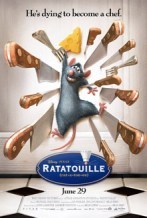 The 2007 publication of the Pixar movie Ratatouille presented a unique set of opportunities for academic study – a challenge which scholars have not ignored. Here is a (non-exhaustive) list of published work about the film :
The 2007 publication of the Pixar movie Ratatouille presented a unique set of opportunities for academic study – a challenge which scholars have not ignored. Here is a (non-exhaustive) list of published work about the film :
● Man is a Puppet, Soul is a Rat: On Pixar’s Ratatouille in Critical Engagements: A Journal of Criticism and Theory, 2015.
● Ratatouille: An Animated Account of Cooking, Taste, and Human Evolution in Ethnos : Journal of Anthropology, Volume 76, 2011 – Issue 3
● Cooking like a Rat: Sensation and Politics in Disney-Pixar’s Ratatouille in Quarterly Review of Film and Video, Volume 31, 2014 – Issue 5
● The Jurisprudence of Ratatouille: The Rat in the Machine, or, the Equivocal Taste of Égaliberté in the International Journal for the Semiotics of Law – Revue internationale de Sémiotique juridique, December 2015, Volume 28, Issue 4, pp 843–866
● A critical review analysis about the movie Ratatouille and its impact on culinary tourism in the International Journal of Qualitative Research in Services, Volume 3, Issue 1
● Homunculus. Icon of Self, from Paracelso to Ratatuille in H-ermes. Journal of Communication, No.4, 2015
Also see:
Recent progress in ‘My Little Pony’ studies
Recent progress in Wonder Woman studies
Recent progress in Kung Fu Panda studies

Marc Abrahams's Blog
- Marc Abrahams's profile
- 14 followers


